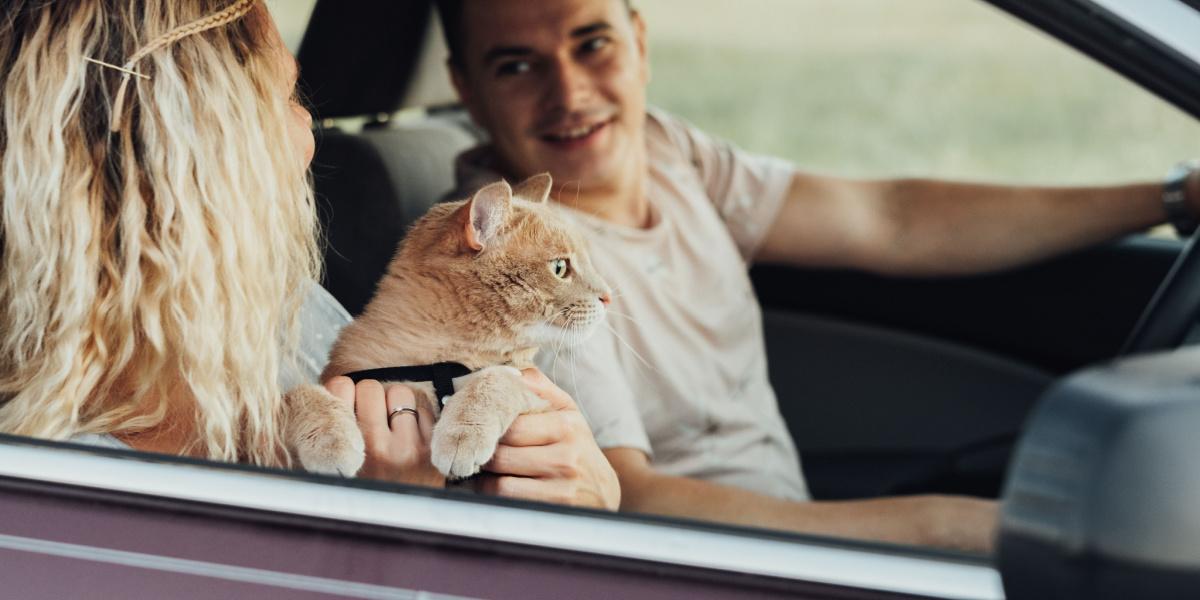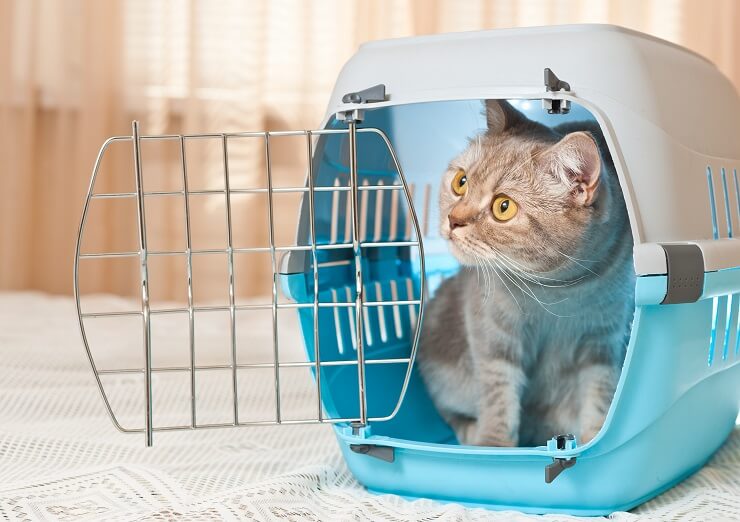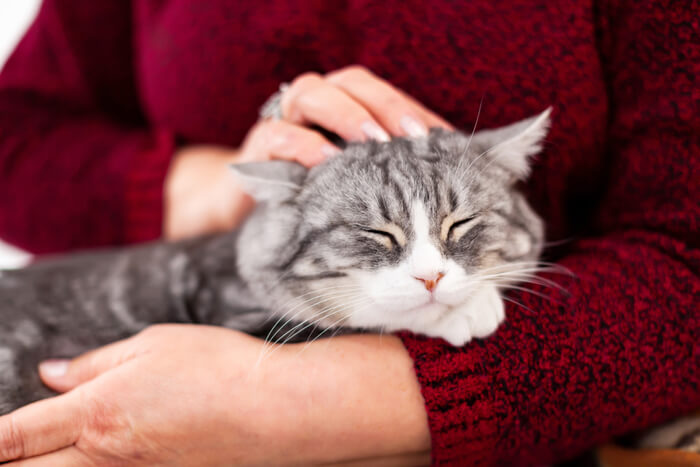
Cats, unlike dogs, rarely travel in cars, and most cat owners will feel a sense of dread when contemplating a road trip with their cat. So why do cats hate long car rides?
Well, car rides are an unfamiliar sensory environment, they interrupt routine, they have negative associations with veterinarian trips and catteries, and they can even make cats sick. The good news if you have an impending car trip is that there are some simple steps you can take to improve matters, given some time and patience.
Many cats dislike long car rides, and some cats might even become nauseous or very stressed in the car. Cats’ dislike of car rides usually stems from a fear of leaving home, unfamiliar smells and sounds, an aversion to the carrier, or motion sickness. A comfortable carrier, pheromone sprays, practice with short trips, and possibly vet-prescribed medications can all help cats be more comfortable in the car.Key Takeaways
Common Reasons Why Cats Don’t Like Car Rides
There are a variety of reasons why cats might not be keen on car travel. For some cats, a combination of things might make them dislike car travel.
1. The Cat Carrier
For many cats, the problems start when the dreaded pet carrier appears. Cats hate being squeezed into this small and unfamiliar space, and the presence of the carrier reminds them of negative experiences such as veterinary visits. Your cat does need to be safely restrained to travel in a car, but many will turn tail and run when the cat carrier appears.
2. A Change in Routine
Cats are creatures of habit, usually following the same basic routines every day. They know when the food bowl is filled, the best place to have a snooze in the sunshine, and they appear like magic to jump on your lap when you finally sit down at the end of a busy day. A car trip can really throw that routine out, and this leads to disgruntled cats.
Perhaps you’ve even had to withdraw their food for a medical procedure or lock the cat flap so they are trapped inside. These changes are stressful and frightening for cats as they don’t understand why their routine has suddenly changed.
3. Leaving Their Territory
Cats are territorial creatures and spend most of their time relaxing, eating, and grooming in their core home area, or out patrolling their peripheral territory. A car journey means leaving their territory completely, which can be a frightening prospect for a cat.
Cats use pheromones (chemical messages) to constantly reassure themselves of their territory and safe places, and being taken away from these calming messages will cause anxiety.
4. Unfamiliar Sensory Input

The strange smells, sounds, and movement of car travel will put most cats on edge.
Cats are extremely sensitive to smell, with millions more scent receptors than we humans have. An unfamiliar environment, such as the cat carrier and a car will overwhelm your cat with new and unfamiliar scents. Add to that the loud noises, sudden movements, novel sights, and strange textures, and your cat might feel disorientated and overpowered by these sensations.
5. Motion Sickness
The movements of car travel are different from most things that cats will experience. Cats are agile creatures, able to jump, climb and pounce, but the rocking motion of a car can cause nausea in cats just as it can in people.
Nauseous cats might drool excessively or vomit. Some cats become distressed, give loud yowling or meowing vocalizations, and might even pass urine or feces.
How To Help Your Cat Feel Better About the Car
Your cat might never love car rides, but there are ways to help keep your cat calm and more relaxed if you need to take a short or long car trip. Some of these suggestions take some time and effort, but having a cat that will tolerate the car is useful, and much more pleasant for our pets.
1. Remain Calm
It can be hard not to feel stressed and anxious if we know we have a difficult situation approaching, but if we calm down, it helps our pets stay calm, too. Cat anxiety, just like humans, tends to escalate if others around them are panicking. Speak quietly and calmly, don’t make sudden movements, and always handle your cat gently, even if they’re being difficult to get into the carrier and you’re late for their vet checkup.
2. Choose an Appropriate Carrier
Invest in a pet carrier that is sturdy and easy to use. A top-opening carrier is much easier to lift a reluctant cat into than one with a small front entrance. The carrier should be big enough that your cat isn’t squashed into it. Some cat breeds such as the Maine Coon will need an especially large carrier to be comfortable.
Many cat owners only bring out the carrier for vet visits or cattery trips, so it’s not surprising that their cats dislike them. Leave the carrier out around your home for a while before it is needed, and try to facilitate a positive experience by leaving some favorite toys, catnip, or tasty treats in the carrier.
When in the car, the carrier should be secured using the seatbelt. This is both for safety, but also to prevent the carrier from moving around too much, which can contribute to distress and motion sickness in cats. The carrier should never be able to move around or fall into the footwell.
3. Try Some Short Trips

Brief trips in the car where nothing bad happens to your cat can help desensitize them to longer car rides.
If your cat hates long car rides, the last thing you might want to do is unnecessary car journeys. However, if you have a long-distance trip planned, it is a good to start getting your cat more used to the car by doing some desensitization. The first step is to acclimate your cat to the carrier, then try placing the cat and carrier into the car and securing it.
Don’t go anywhere initially, just put the carrier in the car then take it straight back inside your home and release the cat. Lots of praise, treats, and toys can make this a really positive experience. Next, try turning the engine on with the cat in the car, but don’t drive off.
Gradually, build up to doing some short car rides. This process should be very gradual and will take time and patience. Use lots of positive reinforcement, and make the experience as pet-friendly as you can. Eventually, your cat should become more tolerant of the car.
4. Anti-Anxiety Products
If your cat gets stressed or anxious about the car, calming supplements and products might help. Feliway is a cat pheromone product that comes as a spray as well as a diffuser. It can be sprayed around specific objects such as the back seat of the car and the cat carrier, and helps to provide reassurance to your cat that they are safe, and that the environment is familiar. Speak to a veterinarian for more information.
5. Medications
Motion sickness can be highly unpleasant and distressing for your cat. If you have an essential car journey, especially a long one, it might be worth discussing potential medications with your veterinarian to ease the journey. This is also applicable to cats that get very distressed about car trips.
Cats and Cars: A Summary

It’s possible to make long car rides easier for your cat with some practice and patience.
Many cats dislike long car rides, and some might even become sick or very stressed. Car trips are unfortunately essential for many reasons, including holiday travel and veterinary trips for wellness exams as well as illness or injury.
Cats’ dislike of car rides usually stems from a change in routine, a fear of leaving home, unfamiliar smells and sounds, a hatred of the carrier, or motion sickness. The longer the car ride, the worse it can be for your cat. There are ways to improve the cat–car relationship, and investing some time will help your cat (and you) be much less stressed when a trip—planned or unplanned—occurs.
If you’re traveling with your cat, always ensure they have a microchip updated with your current contact information. Accidents happen, and if your cat manages to get out of the carrier, or escapes from the car, you are much more likely to be reunited if they have a functioning microchip. A collar with a safety release and a tag is also helpful, but a microchip is less likely to come off.
Also Read: Stress In Cats: Causes, Symptoms, & Treatment
Frequently Asked Questions
How do I relieve my cat’s car stress?
Try and plan your journey time for minimal disruption to your cat’s routine. Get a carrier that is comfortable and large enough, and have it out for a few days before you go. Secure the carrier safely in the car so it can’t move, and use pheromone sprays to relieve stress. Try and practice short journeys before a long car ride is needed.
What do I do if my cat hates the car?
Make sure your pet carrier is large enough for your cat and comfortable. Have it out for a few days before you go, and put some toys or food inside. Secure the carrier well in the car so it can’t move and desensitize your cat to the car by practicing frequent short trips.
How can I help my cat with a long drive?
Purchase a suitable pet carrier and get your cat used to being in it before you go. Use pheromone sprays in the carrier and car to relax your cat. Practice plenty of short trips before you take a longer one. Speak to your veterinarian about medication if your cat gets motion sickness or is very distressed in the car.
Why do cats hate riding in the car?
Cats hate anything unfamiliar, out of their territory, and disruptive to their careful routines. Cars are noisy, smelly, and the movement can cause nausea. Cats often also hate pet carriers, which restrain them so there are no escape options, and often have negative associations with veterinary visits.








My sisters howl from the moment we start the car engine until we get to the vet’s office. Luckily for us, we only live about 1 mile away so the torture doesn’t last very long. To tell the truth, every year when their yearly exam is due, I don’t sleep well the night before because I anticipate: 1. trying to capture them to put them in their crates (which they go in willingly any other time), and 2. the trauma I am about to inflict on them. While at the vet’s office they seem perfectly calm–receiving their vaccinations, being weighed, having their nails trimmed–all without any fuss. But that car ride, however brief, is most unpleasant.